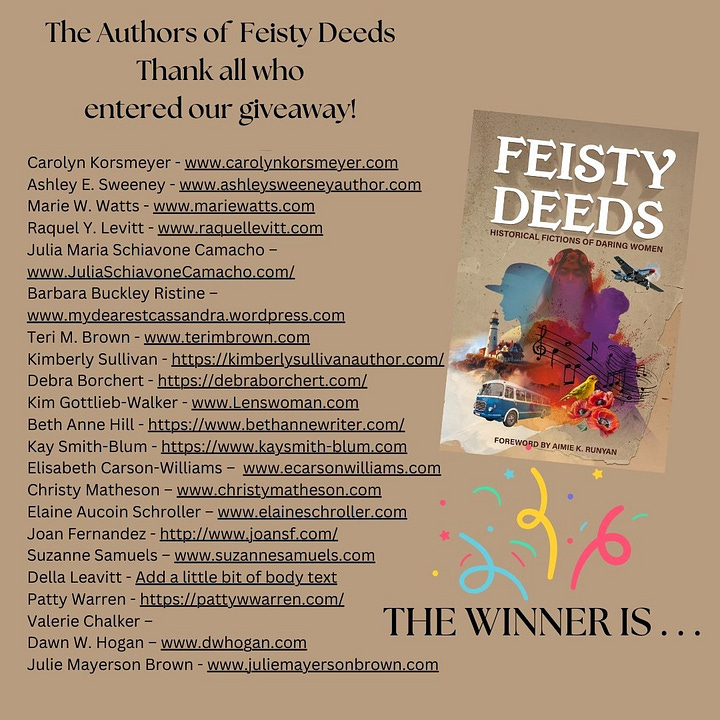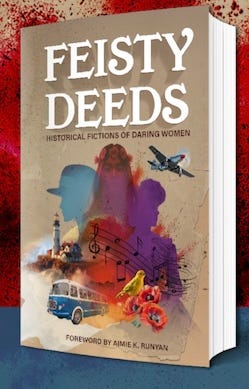Nina Wachsman graduated from Parsons School of Design where she studied with Maurice Sendak. She had a career as an art director before she decided to concentrate on her passion for writing. Nina’s a descendant of a dynasty of rabbis, one of whom was a contemporary of Rabbi Leon de Modena. She has a love for Venice and has ties to the area. This love led her to write a series of historical suspense novels set in 17th Century Venice. Her Venice Beauties Mystery Series, The Gallery of Beauties and The Courtesan’s Secret, are available now and the third book, The Courtesan’s Pirate, will be published by Level Best Books/Historia in the Fall of 2024. Her first two books have been nominated for the Agatha and Silver Falchion awards.
Nina’s art background shines through in her short story, ‘The Deadly Portrait,’ set in Suffolk, England in 1853. A young woman is hired to paint portraits, but also assassinate the subjects of her paintings. While working on her current portrait, the artist becomes concerned her talents are being misdirected. Nina’s short story provided a peek into English life during the 1850’s and her knowledge of art enhanced the story with unique details. The story had me reading as fast as I could to reach the end, only to find a twist. Check out her website: (https://venicebeauties.com/) for more information on Nina, her stories and her books. After you read her story, send her a comment or write a review on Amazon or Goodreads. Let me know if a chill crept up your spine, too.
Nina’s Interview: ‘The Deadly Portrait’
1. How did this story come to you and how did you get the idea for your Feisty Female Character?
It came from being a fan of Oscar Wilde's, The Picture of Dorian Grey, and a long time idea for a woman character who was an artist in Victorian times. The special talent and power of a portraitist taking surreal proportions, especially a woman, who was generally powerless in this society really intrigued me.
2. What’s your writing process/routine?
I think about the next chapter right before I go to sleep, and then write it in the morning. It's the best time to write when my headspace is clear of all the other things weighing on me.
3. What was the hardest part of writing this story?
Figuring out how to end it. There were so many different ways it could have gone. But once I got into the characters while I was writing it, they dictated where to go.
4. How do you select your character’s names?
My main character is not named, but the other names just came to me out of the blue. Probably because I read so much, there are so many names swirling in my head.
5. Describe your writing space.
I write on a couch in my den, where I can keep my legs up and not stress my back. I'm old, so I need to accommodate my creaky body.
6. Do you only write only Historical Fiction or do you write other genres?
I write contemporary detective stories as well, but most of what I write has an art theme, since I have an art background -- I went to Parsons School of Design and studied book illustration with Maurice Sendak.
7. What question do you wish someone would ask you about yourself and/or your story and no one has?
Why do you write historicals?
Believe it or not, no one has asked me that, when most of my work is historical. The history is what makes the characters and the story interesting.
I’d love to hear your thoughts Nina’s interview and her story, especially if you’ve read Feisty Deeds: Historical Fictions of Daring Women. We would love a review on Amazon or Goodreads if you’ve read the book. It’s for sale on Amazon, BookBub, Kobo, and Barnes&Nobles.








Just loved this interview, Patty. Nina's thoughts on process, the envisioning of the next chapter just before she goes off to sleep at night is awesome. I tend to try and read until my eyes close (a sentence or two! lol!) and then wake up in the morning and see where the story takes me. Too much of a pantser in first drafts, but eventually that changes. Gave me good food for thought going forward!